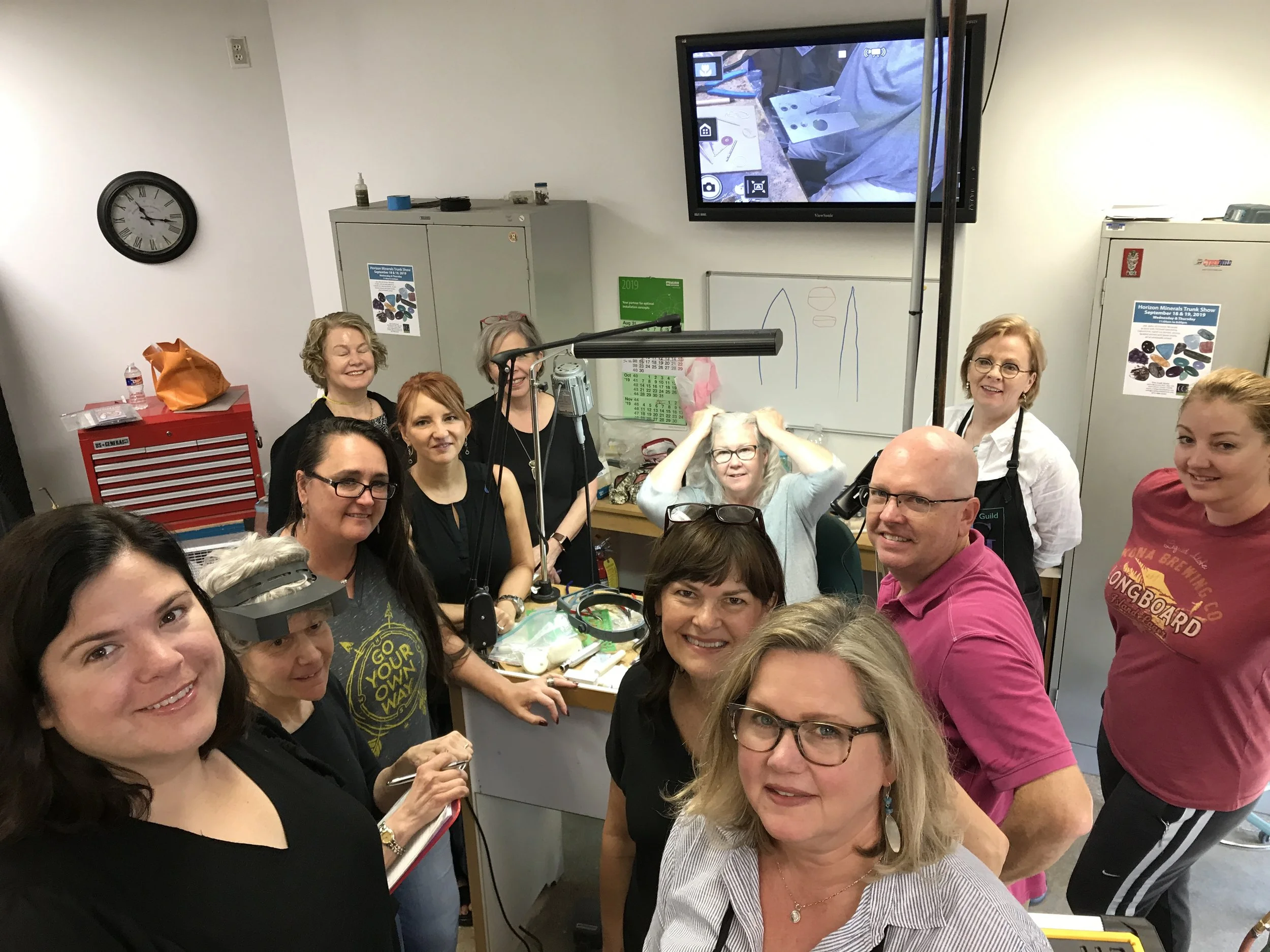
Jewelry
Interested in making jewelry?
Learn to craft stunning jewelry through beading, metal clay, and metals classes! Explore techniques for creating earrings, rings, and bracelets using beads, stones, sterling, copper, gold, and more. Enjoy hands-on learning in our fully equipped studios with expert guidance — perfect for beginners and advanced makers alike.
-
Students will learn techniques and use of tools for creating their own jewelry with detailed step by step demonstrations, followed by lots of hands-on practice time. Skills covered will include: sawing, filing, drilling, doming, forging, forming, surface textures,soldering, and bezel set stones. This fun and interactive class will include a forged bracelet, a textured pendant and a ring with a cabochon stone setting.
Advancing students will work on individual projects with an emphasis on technical problem solving and mastering new skills. Students advance at their own pace, instruction is individualized as you progress to more complex design and construction techniques. Ongoing processes taught are advanced soldering skills, stone setting, design and product development.
This class is a great place for Intermediate students that have had only one or two classes or to get back into building on what you know to increase your skills before moving on to advanced. If you have questions feel free to contact us for more detail.
First-time Students:You will NOT need any tools or supplies for the first class just a $15.00 supply fee paid to instructor during first class.
-
Intermediate/Advanced students will work on individual projects with an emphasis on technical problem solving and mastering new skills. Students advance at their own pace, instruction is individualized as you progress to more complex design and construction techniques. Ongoing processes taught are advanced soldering skills, marriage of metals, Hydraulic press, granulation, hollow construction, advanced stone setting design and product development.
-
In this class students will learn the techniques of wax carving, vacuum casting, and metal finishing. Hands on experience includes wax forming techniques, preparing the wax model for casting [spruing], calculating the amount of metal needed to cast a wax model, the investment process, and kiln burnout cycles.
-
Cloisonné is a metal work technique that makes use of fine silver or gold wires that are bent into shapes to create small cells. The cells make up the design of the art work. The cells are filled with small particles of colored glass. The glass is added in layers to create depth of color and shading. Each layer is fired in a kiln. The finished piece is smooth and polished.
Beginning students to metal clay and enameling will learn the basics of molding fine silver to form a base on which Cloisonné enamel will be fired. Students will learn to form wires into cloisons or compartments which will be filled with enamel.
-
Cloisonné is a metal work technique that makes use of fine silver or gold wires that are bent into shapes to create small cells. The cells make up the design of the art work. The cells are filled with small particles of colored glass. The glass is added in layers to create depth of color and shading. Each layer is fired in a kiln. The finished piece is smooth and polished.
Intermediate and advanced enamel students will work on different projects focusing on new skills such as unique settings for enamels and solving technical problems with regard to the challenges in firing enamels.
Prerequisite: Students must have had 3 beginner enamel and metal clay classes before moving on to this class.
-
These classes are designed for both the novice and the experienced beader, progressing from a basic string of beads to complex designs with a focus on color and composition. A variety of stitches are demonstrated and practiced such as peyote and other popular styles. Bead embroidery may be covered, depending on student interest.
For new students, instructions are provided so you can practice and work on your projects at home between classes allowing for a new project to be introduced and started each week. Experienced beaders can work on independent projects with guidance provided by an expert instructor.







